You’ve probably had an itchy scalp which has been pretty manageable, but you recently noticed some clear liquid oozing from your scalp and are wondering, “Why is my scalp weeping clear liquid?”.
What Is Weeping Scalp?
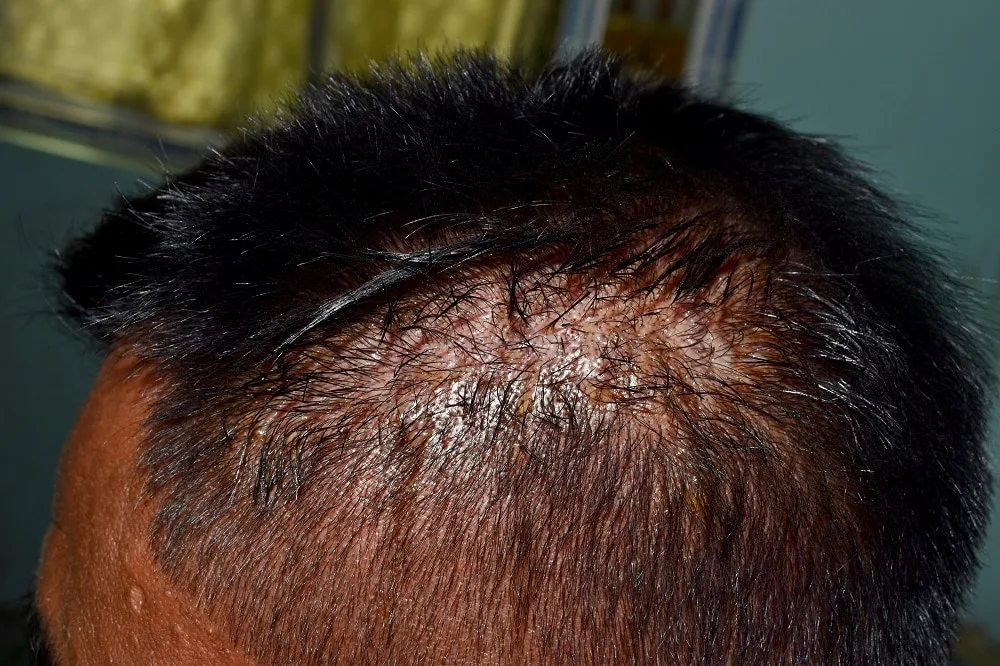
The weeping scalp is a condition that causes the skin or scalp to produce a clear liquid. It’s a telltale sign that your scalp is infected with a bacterium, usually Staphylococcus aureus, causing it to develop small, fluid-like blisters or sores.
Often referred to as weeping eczema, it results from active inflammation of the skin that causes the blood vessels to dilate. The dilated blood vessels leak serum into the skin’s soft tissue causing it to produce a clear fluid.
The fluid dries, causing an orange or yellow layer of crust to form on the scalp. Sometimes the scalp becomes inflamed, dry, or cracked, and develops other symptoms like:
- Redness
- Open sores
- Blisters
- Crusting
- Skin dryness
- Swelling
- Fluid on the skin
- Skin Itching, soreness, and burning
Why Does Scalp Weep Clear Fluid?
Oftentimes a weeping scalp is a symptom of an underlying health condition, and identifying it is critical to treating the problem. If your scalp is weeping clear Possible reasons a scalp weeps clear fluid are:
1. Sebum Overproduction
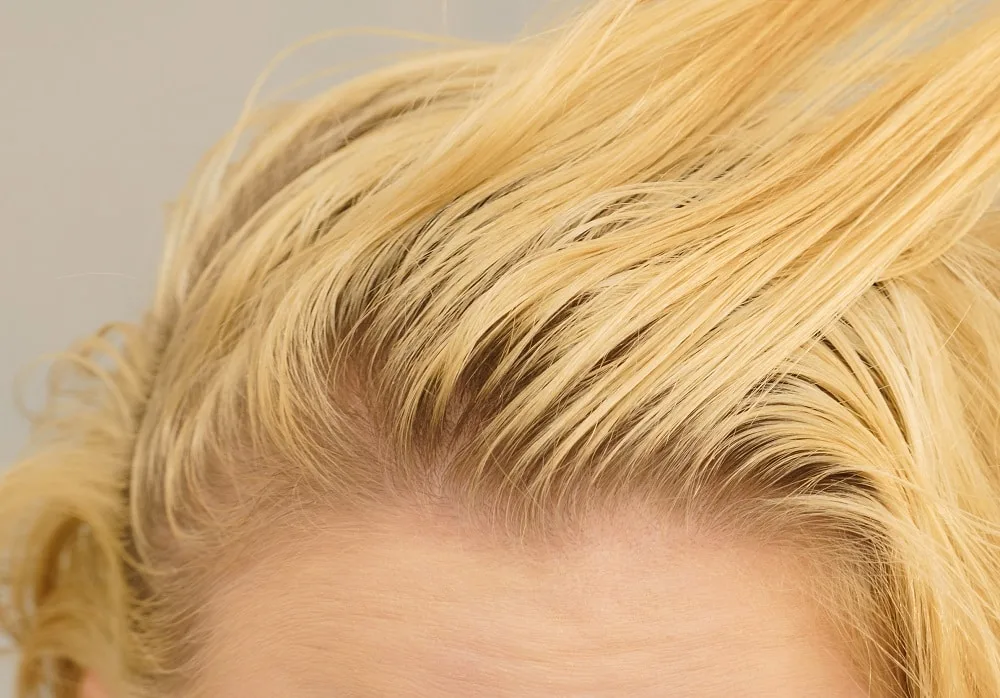
Sebum is an oil that the body produces to protect, moisturize, and coat the scalp. Sebaceous glands, which are mainly located on the scalp and the face, produce the oil. Sometimes the scalp overproduces sebum leading to an accumulation of natural oils.
Excess sebum production happens when you use the wrong hair products, the hair and the scalp go long between the washes or if there’s a hormonal imbalance. The buildup forms a yellowish or white residue on the scalp and is often mistaken for eczema, dandruff, or psoriasis.
The scalp also becomes itchy, crusty, and uncomfortable and may develop pus-filled pockets, leading to weeping clear fluid if popped.
2. Bacterial Infection
Bacterial infections caused by staphylococcus aureus can lead to a weeping scalp. The bacteria is the most common reason people with herpes simplex virus (HSV-1) develop the condition. You could also be scratching the scalp excessively, making it prone to bacterial infections.
The scalp may break, causing bacteria, dirt, and debris to enter the wound. The germs cause an infection causing pain, irritation, and a clear fluid to seep out.
3. Tinea Capitis
Tinea capitis is a fungus also known as scalp ringworm. The infection affects the hair and the scalp. It develops when the fungi enter the follicles and the hair shaft, causing the hair to break at the surface. The condition can be inflammatory or non-inflammatory, with the former causing kerion.
Tinea capitis kerion causes the scalp to develop painful, pus-filled patches that ooze clear fluid and, in extreme cases, permanent hair loss.
On the other hand, the non-inflammatory tinea capitis doesn’t have severe symptoms; rather, it causes the scalp to develop black dots or gray patches. Although the condition often affects kids aged 3-14, adults with a weak immune system can also contract Tinea Capitis.
4. Scalp Psoriasis
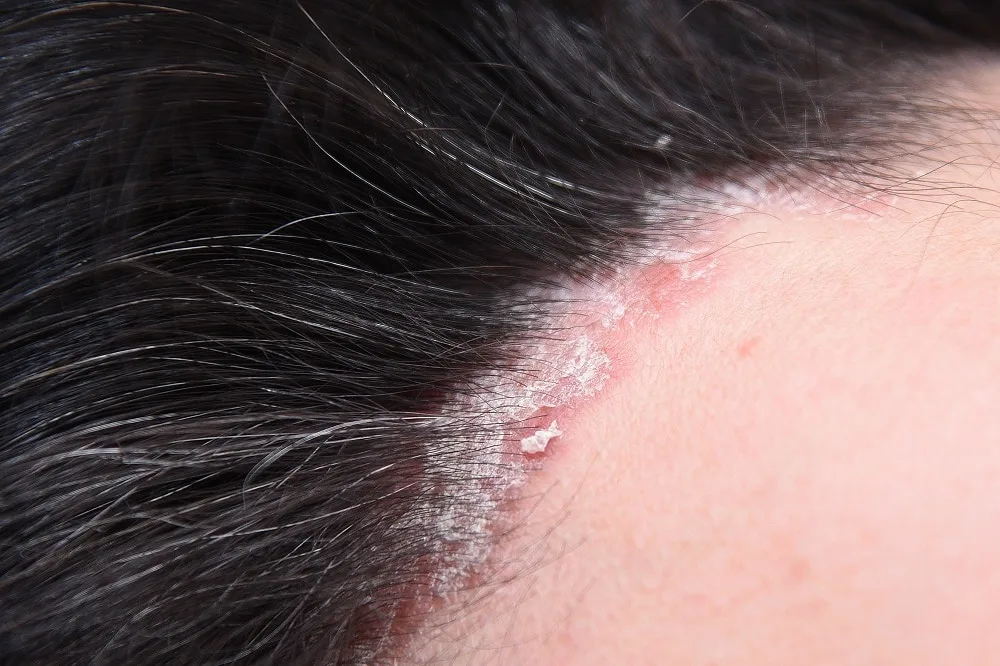
This is another condition that may cause your scalp to weep clear fluid. Scalp psoriasis is a skin disorder that causes skin cells to build up on the skin’s surface. Since the body can’t shed the excess skin as quickly as the new skin grows, the skin piles up on the surface, developing scalp psoriasis.
Consequently, the skin develops white, gray, or red scales depending on your skin tone. Scalp psoriasis makes the scalp itchy, causing the patches to crack and ooze clear fluid. Mild scalp psoriasis leads to fine scaling, but in severe cases, the condition may cause other symptoms like:
- Dry scalp
- Hair loss
- Soreness
- Scaly or bumpy patches
- Gray scales
- Burning or soreness
Topical treatments like gels, medicated shampoos, oils, creams, and ointments can treat mild psoriasis easily.
5. Seborrheic Dermatitis
This is one of the most common scalp conditions known to cause weeping clear fluid in the scalp. The scalp may also develop red, itchy patches that spread beyond the scalp to the nose, face, ears, and eyebrows.
Seborrheic dermatitis results from Malassezia, a fungus produced by the scalp when secreting oil. People with a weak immune system, Parkinson’s disease, diabetes, and depression are also susceptible to developing the condition.
6. Scalp Folliculitis
This skin condition causes inflammation of the hair follicles on the scalp. The scalp develops small bumps that grow larger over time and, if not treated, spread to the back or center of the head.
Scalp folliculitis may also cause itching or burning of the skin, sores with yellow or brown scabs, mild fever, and crusty sores or clusters of pus-filled bumps that burst when scratched. Scalp folliculitis results from a range of causes, including:
- Bacterial infections
- Yeast infections
- Ingrown hair
- Weak immune system
- Exposure to unchlorinated water
- Prolonged use of topical antibiotics
Mild cases of infection are easy to treat using anti-dandruff shampoo, topical treatments, and home remedies like:
- Using a new razor when shaving
- Applying antibiotic ointment on the bumps
- Laser hair removal to eliminate infected hair follicles
- Applying a warm compress to drain pus and reduce inflammation
7. Cysts
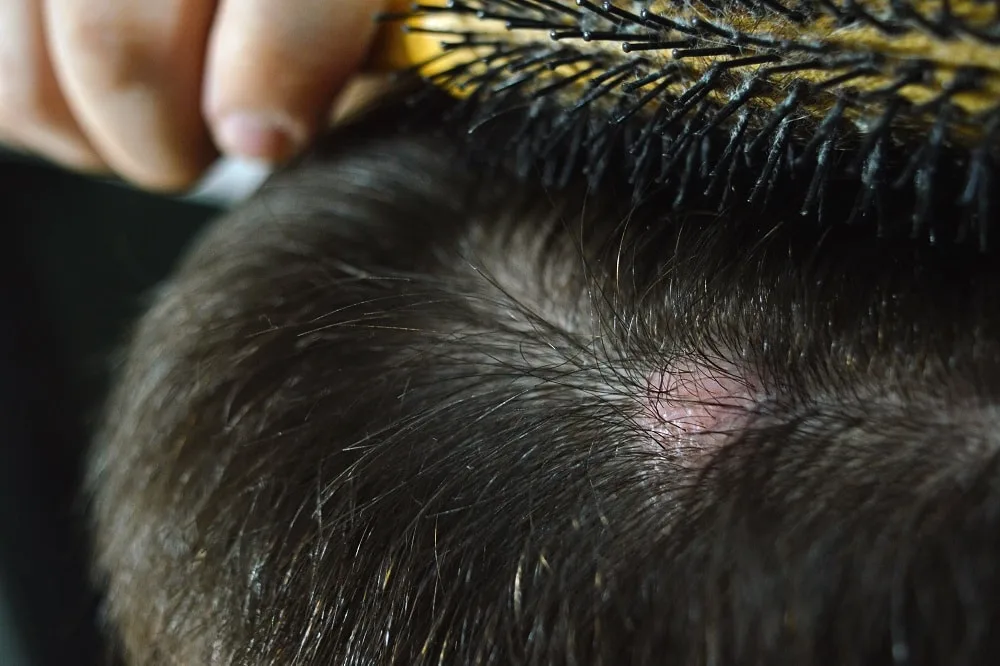
It could also be that the skin has developed pilar cysts around the hair follicles. The cysts form white or yellow round bumps filled with fluid, and popping them causes a clear liquid to flow. It also moves when pressed and, if pressed too hard, can cause soreness or pain.
Cysts often develop when dead keratin cells move deep into the skin and multiply. When keratin cells die, they typically move to the skin surface, waiting to be washed away. If they remain on the scalp, they develop into cysts.
A telltale sign that you’ve cysts is when you develop small lumps on the scalp, inflamed and tender to the touch.
The skin around the cyst may also turn red. Small cysts are easy to remove using steroid drugs, but if they grow large, inflamed, and cause hair loss, the doctor may surgically remove them.
8. Shingles
Shingles is another infection that could cause the scalp to weep clear fluid. The condition results from the same virus (varicella zoster) that causes chickenpox and is common in people aged 50 and above. It happens because the virus remains in the body and becomes active again.
Typically, when you’ve healed from chicken pox, the virus moves to the roots of the nerve cells and becomes inactive, but if it’s reactivated, it’s referred to as shingles. A weak immune system is known to reactivate the virus, especially in older people and those taking immune-suppressing drugs.
Shingles may also appear after major surgery or as a complication in the treatment of AIDS, cancer, and other such chronic illnesses.
The condition causes small pus-filled blisters that dry and crust over the skin after a few days. You may also experience numbness, burning, sharp pain, and tingling on the skin.
9. Allergic Contact Dermatitis (ACD)
ACD is a scalp condition that develops as an allergic reaction to harsh shampoos and conditioners, hair dye, and chemicals like methylisothiazolinone (MI). The scalp produces itchy, painful rashes that ooze a clear fluid.
Identifying the trigger is the first step in dealing with the condition. However, since it can be challenging to pinpoint the trigger, a dermatologist may prescribe a cream, topical steroid gel, cream, or foam.
Why Does Scalp Ooze Clear Liquid After Bleaching?
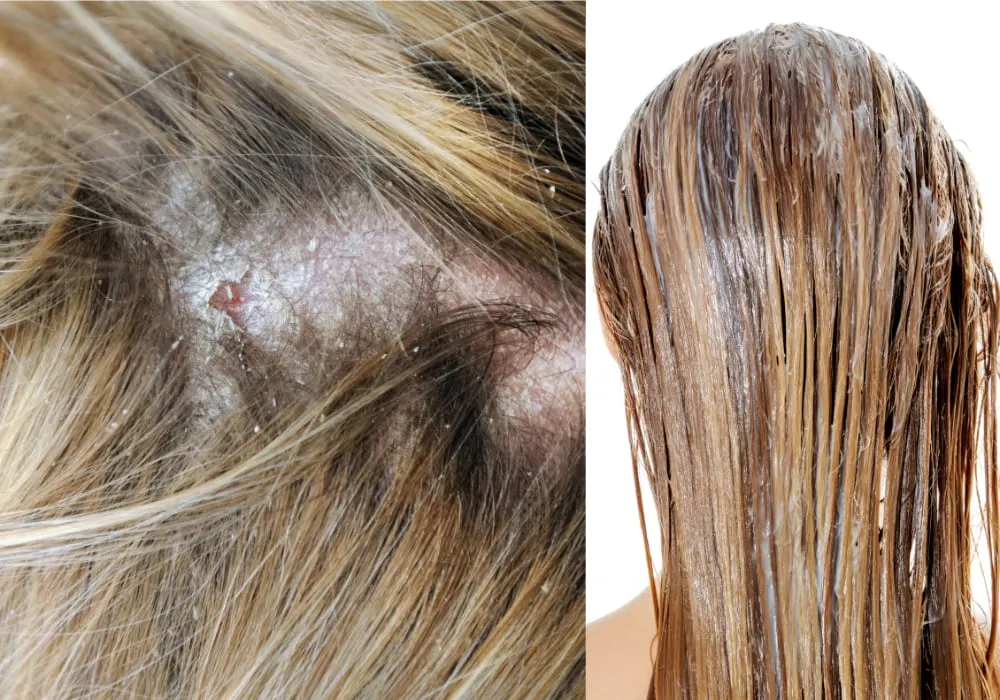
The scalp also oozes clear liquid after bleaching. It happens when the bleaching products cause chemical burns on the scalp. The burns are often superficial, but if they’re deep, the scalp develops a burning sensation, itchiness, flaky or scaly skin patches, and weeping of the affected area.
Scalp bleaching may also irritate, causing contact dermatitis with similar symptoms. The reactions appear quickly, disappearing within minutes or hours of exposure. If they don’t, you can:
- Rinse the area immediately to get rid of the product
- Avoid scratching, rubbing, or wiping the scalp
- Allow cool water to run on the scalp for 10 or more minutes without pooling.
- Applying a cool compress on the area to reduce swelling and pain
- Keep the affected area clean and look out for signs of infection.
- Take over-the-counter drugs like acetaminophen, Ibuprofen, or naproxen
- Moisturize the scalp to minimize flaking and itching
How To Know Weeping Scalp Is Serious
Dealing with the underlying health conditions is critical to treating weeping scalp. The proper treatment should clear the problem in a week or two. Sometimes the condition worsens, causing the skin to produce clear fluid even after treatment.
Such scenarios are rare and happen when the underlying conditions are misdiagnosed or not treated properly. Scalp conditions like eczema, scalp psoriasis, and seborrheic dermatitis are often misdiagnosed because they have similar symptoms and may cause weeping scalp.
Psoriasis, for example, affects the outer parts of the body, like the scalp, elbows, and knees, while eczema occurs on the inside of the legs and arms. Conversely, seborrheic dermatitis is a form of eczema that mainly affects the scalp, causing flakiness, redness, and weeping skin.
Misdiagnosing the condition, for example, recommending an anti-dandruff shampoo for psoriasis instead of topical ointments and creams, may worsen the condition. If the scalp doesn’t heal after treatment, it’s best to visit a doctor.
How To Treat Weeping Scalp
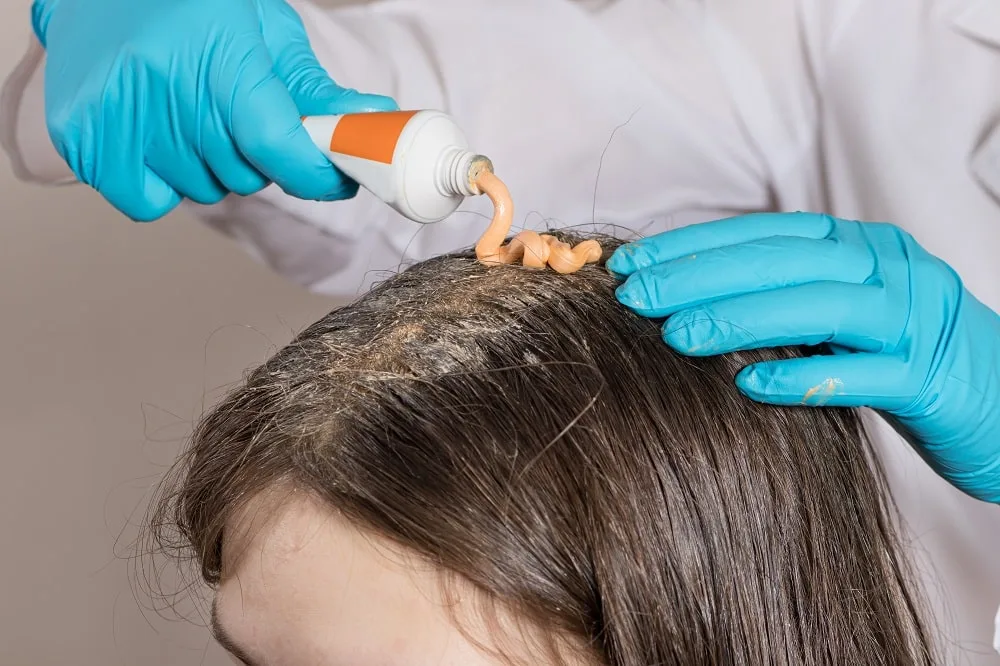
There’s no defined way to treat weeping scalp; it varies depending on the underlying health condition. In most cases, dermatologists prescribe antiseptics, gels, creams, ointments, and anti-inflammatory treatments.
Keep in mind weeping scalp results from scratching and irritation. Therefore, finding ways of managing these symptoms helps deal with the problem.
The doctor may also diagnose a specific health condition, e.g., psoriasis, bacterial infection, scalp folliculitis, or seborrheic dermatitis, and prescribe the necessary medication. The most common remedies include:
- Antihistamines: They are often prescribed to reduce itchiness and treat allergies
- Corticosteroids: Scalp weeping often results from the inflammation of the skin cells, and corticosteroids minimize this symptom and itchiness. Oral steroids like prednisone are the most common corticosteroids prescribed.
- Immunosuppressants: They also reduce inflammation by managing the body’s immune response
Sometimes home remedies are effective at treating weeping scalp. To minimize inflammation, you may apply natural oils like sunflower seed oil, coconut oil, or olive oil. Also, cleaning the scalp with medicated shampoo eases itching.
Is Weeping Scalp and Scalp Scabs the Same Thing?
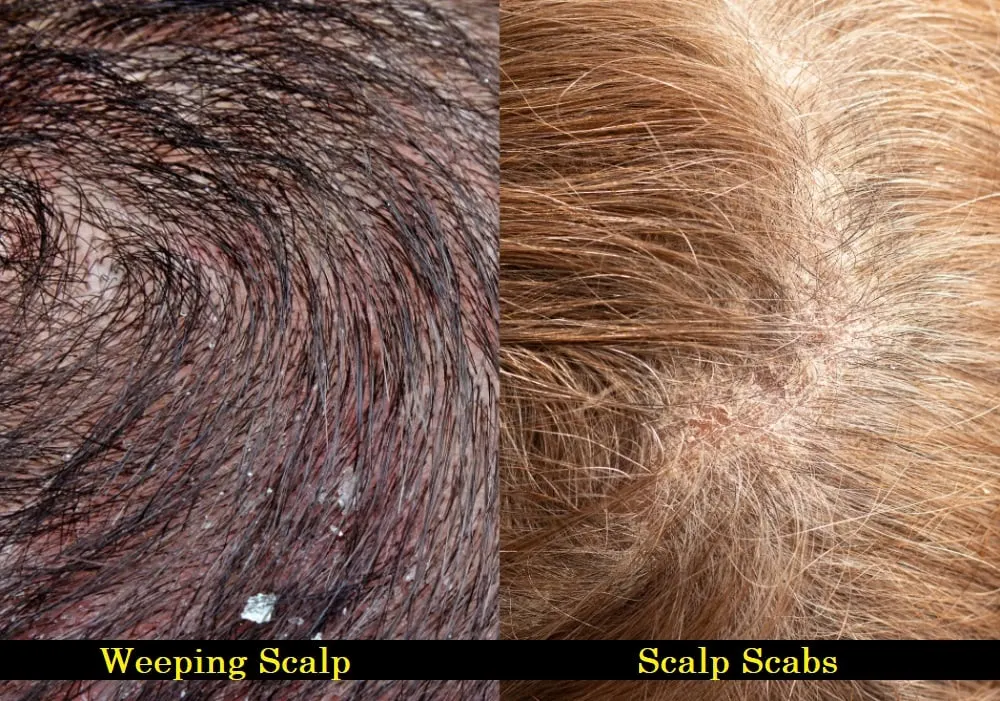
Weeping scalp and scalp scabs aren’t similar, but they’re symptoms of underlying health conditions like seborrheic dermatitis, scalp psoriasis, shingles, and more. Both conditions also result from inflammation of the scalp or hair follicles and can be itchy and unpleasant.
The main difference is in their form. Weeping scalp occurs when the scalp develops pus-filled sores or blisters, which produce a clear fluid when scratched or popped.
Scabs, on the other hand, are crusty and yellowish. They develop on extremely dry scalps due to high mineral content, excessive hair washing, harsh shampoos, and treatments.
Summary
Weeping scalp results from active skin inflammation and bacterial infection. It’s also a symptom of underlying health conditions like Tinea Capitis, and scalp psoriasis to mention a few.
- Weeping scalp is a condition where the scalp produces clear liquid, often due to bacterial infection or inflammation.
- Underlying conditions can include sebum overproduction, bacterial infection, tinea capitis, scalp psoriasis, and seborrheic dermatitis.
- Other factors include scalp folliculitis, cysts, shingles, and allergic contact dermatitis.
- Treatment varies and can include antihistamines, corticosteroids, and immunosuppressants.
- Weeping scalp is different from scalp scabs; the former oozes liquid while the latter forms dry, crusty layers.
- Misdiagnosis can worsen the condition; consult a doctor for accurate diagnosis and treatment.
FAQs
Yes, scalp psoriasis can ooze pus when the infection is spreading rapidly. It’s important to visit a doctor to avoid to have the infection checked.
Scalp weeping develops after scratching when the inflamed skin develops pus-filled blisters or sores. Itching and scratching cause them to pop open, producing clear fluid.
Scalps ooze yellow liquid when they’re infected with scabs and sores. The scabs may crack, causing a small amount of pink or yellow fluid to ooze.
You can prevent weeping scalp by managing the symptoms of the underlying health condition:
– Applying soothing and moisturizing ointments and creams
– Taking antihistamines to relieve itching
– Taking dietary supplements to boost your immune system
– Applying tacrolimus, steroid, or pimecrolimus creams
– Avoid harsh soaps, shampoos, and cleansers. They should also be free from perfumes and dyes.
